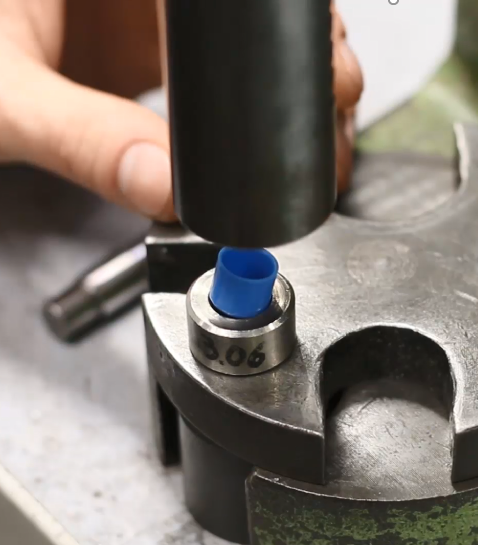How to press-fit bushings
Lars Butenschön | 12. August 2021
If you want to always be able to install your bushings, especially plain bushings, without frustration or damage, you should follow a few basic tips. This post will list these tips and provide an explanation for each.
Before press-fitting the bushing: Pay attention to tolerances and fit-related oversizing
Plain bushings must be press-fitted because they are held in the housing hole by means of press-fit seating. This prevents them from slipping out of the bearing point during operation and from turning with the shaft. The amount of oversizing necessary for press-fitting depends on material, thermal expansion, and moisture absorption. The various manufacturers select bushing dimensions and tolerances so that they produce the right oversizing for certain hole fits.
Here, you can also take advantage of material-dependent properties affecting thermal expansion and moisture absorption. For instance, if you cool the bushing before press-fitting it, it shrinks (depending on material) and can be more easily press-fitted.
In any case, pay attention to the intended hole tolerances and design the hole accordingly. If you want to manufacture the bushings yourself, ask the raw material manufacturer whether he can provide recommendations for bushing diameters.
Press-fitting bushings for the practical: the hammer
During repairs on the line or when a combine harvester suddenly fails in the field, you might be tempted to take a direct approach to repairing a bushing: Retrieve the bushing and position it. Hit it with a hammer. Done. If there really is no other way, at least use a rubber mallet. This will avoid damage to the bushing.
You should also make sure that the bushing is not tilted in the housing hole. It also helps if the installation side of the bushing has a guide chamfer or the edges are at least properly broken. When you are driving in the bushing, try not to put all the week’s frustration into your efforts. Plastic bushings in particular require some finesse.
Press-fitting bushings in style: the mounting press
The method of choice for professional, repeatable plain bushing installation is, of course, the mounting press. There is a large selection of more or less easy-to-operate devices, both manual and automatic. They ensure even, straight press-fitting motions and make it easier to avoid damage to the bushing and injury to the operator. Nevertheless, presses have one or two problems of their own.

For plastic bushings, use a flat press with no centring pin. Such a pin is tempting, since it positions the bushing correctly in a single procedure. That is precisely why using a centring pin is recommended for metal plain bushings. For plastic plain bushings, the guide chamfer, which is usually present, is sufficient for guiding the bushing. Because plastic bushings lack the perfect roundness and coaxiality of metal bushings (nor do they need them because of their greater flexibility), a press-fit pin would introduce an unnecessary risk of damage during press-fitting.
Top tip: Chamfering and de-burring the housing hole
To facilitate press-fitting, the housing hole can also be chamfered on the mount-side edge. In any case, it is helpful to at least roughly break the edge in order to remove any burrs. Burrs or sharp edges can damage the bushing’s outer contour, especially if the bushing is made of a soft material.
We are here for you!
Do you need help optimising your bushing installation? More than 250,000 customers all over the world count on igus plain bushings. Take a look at our extensive catalogue range (more than 10,000 dimensions in various materials from stock) and have our bearing technology experts advise you. Learn more now.

